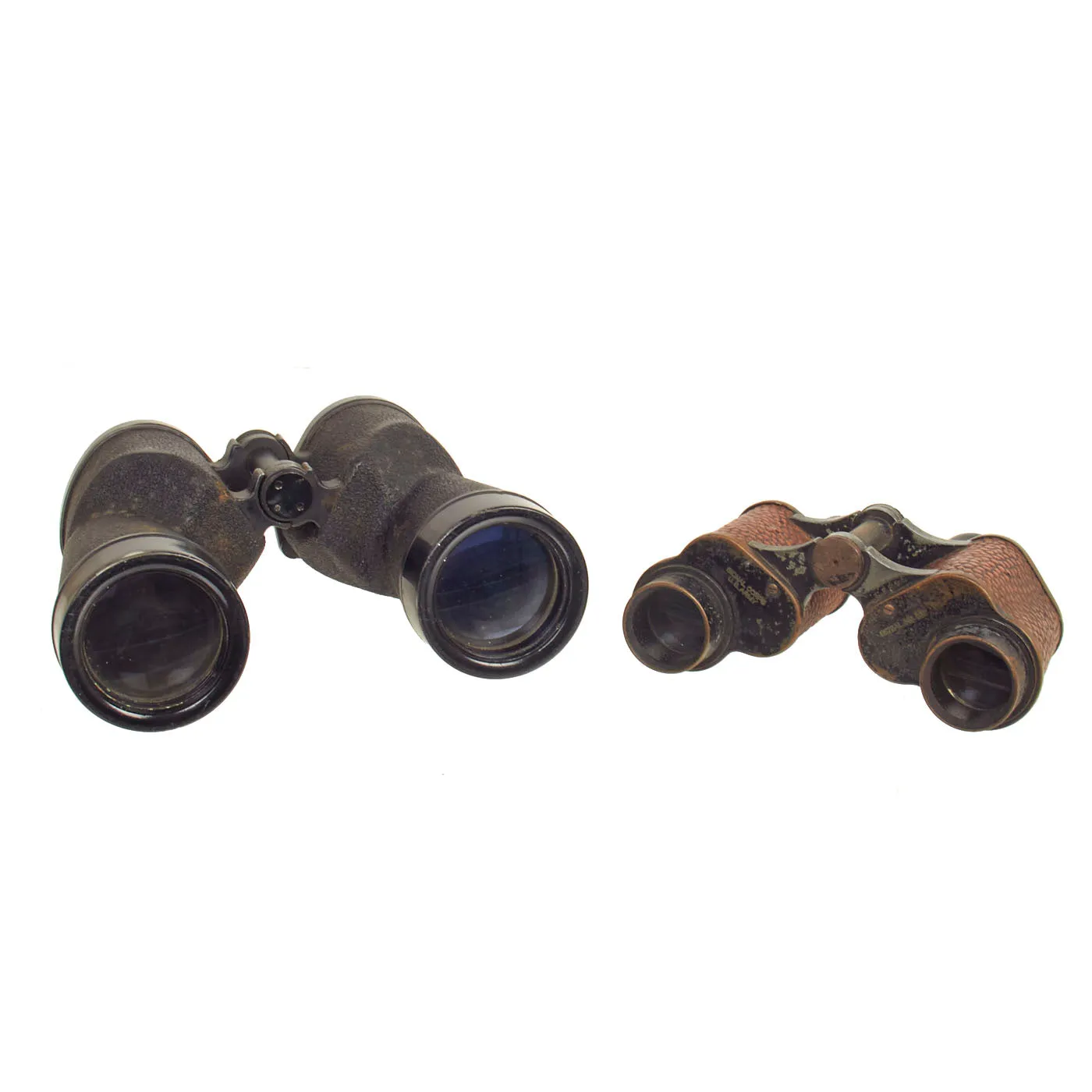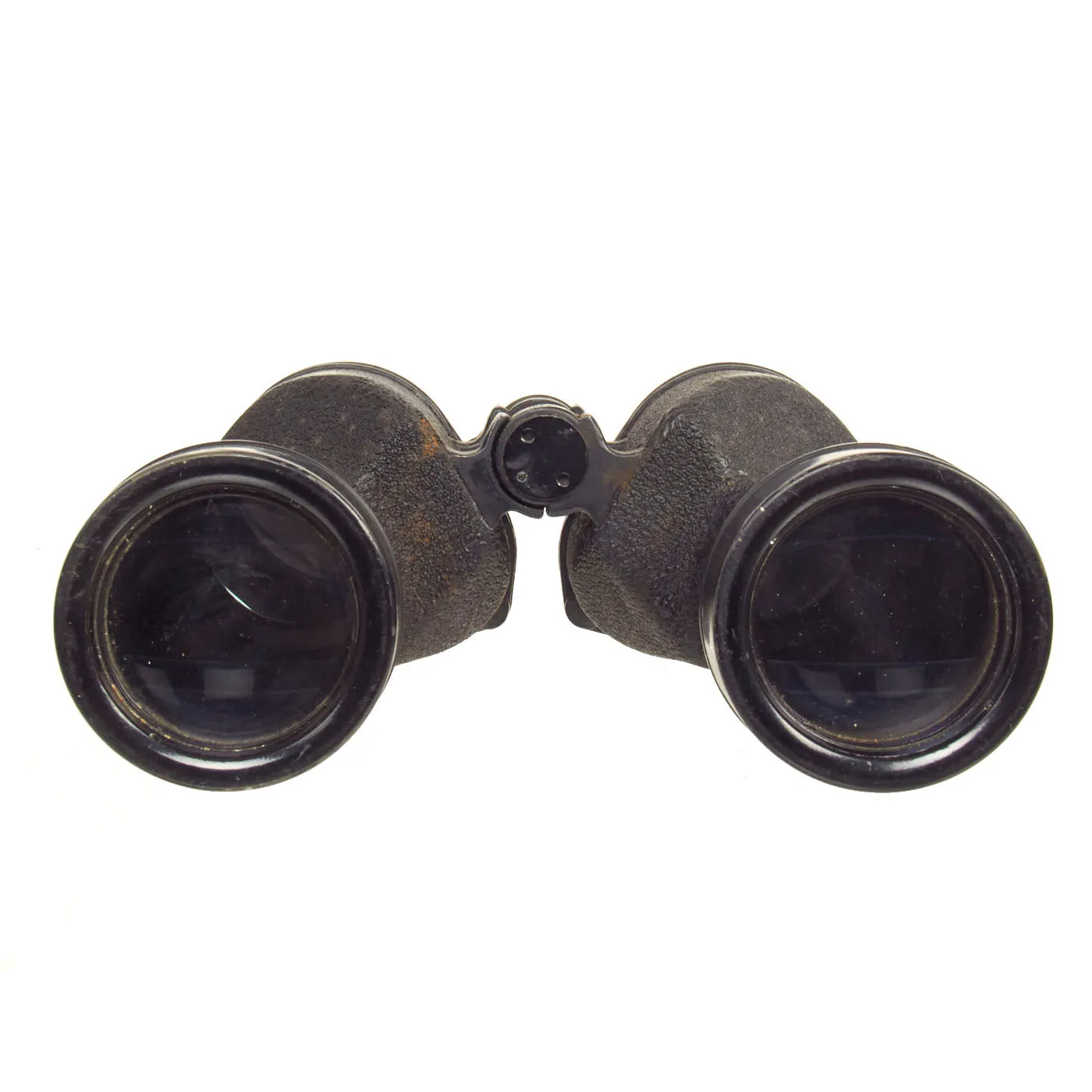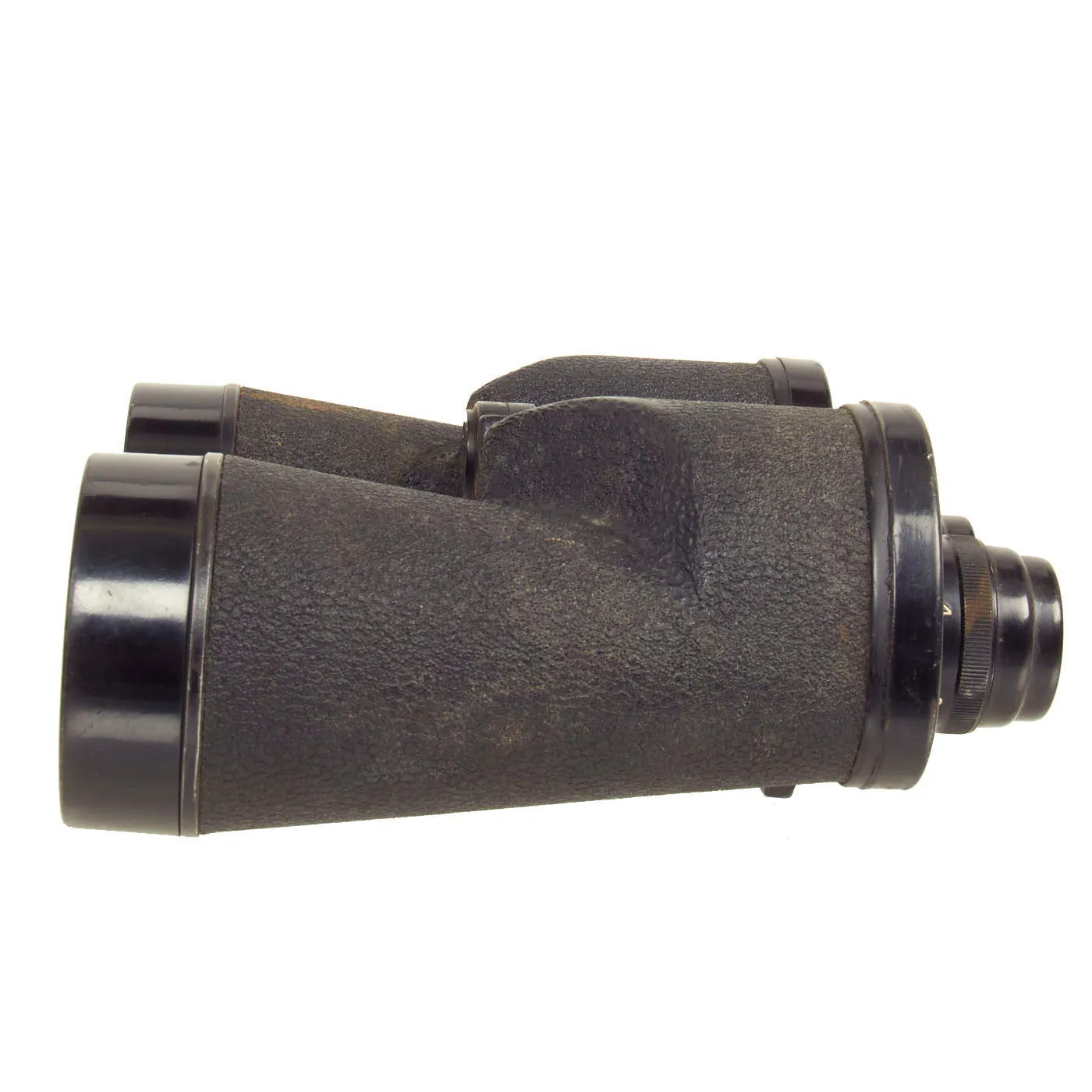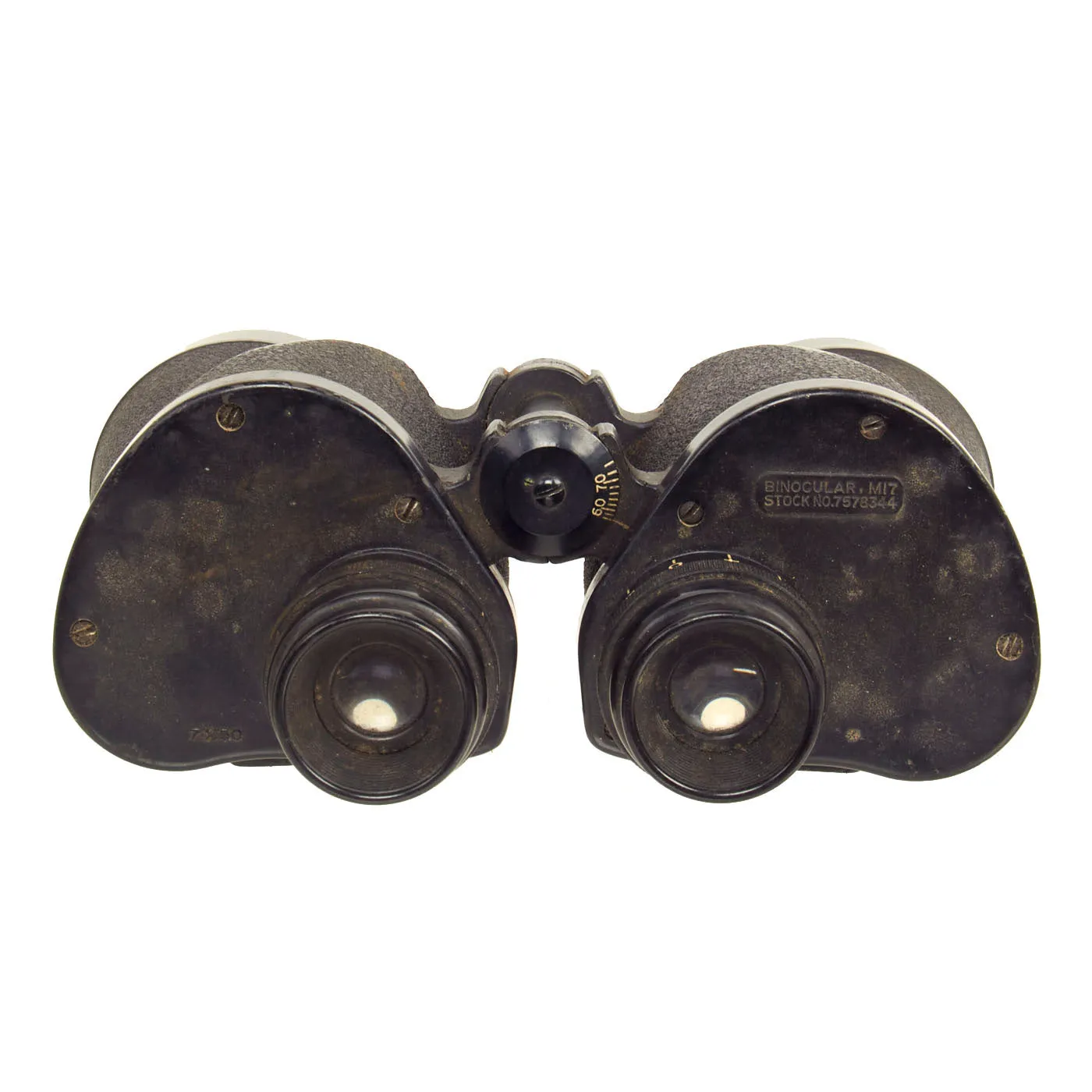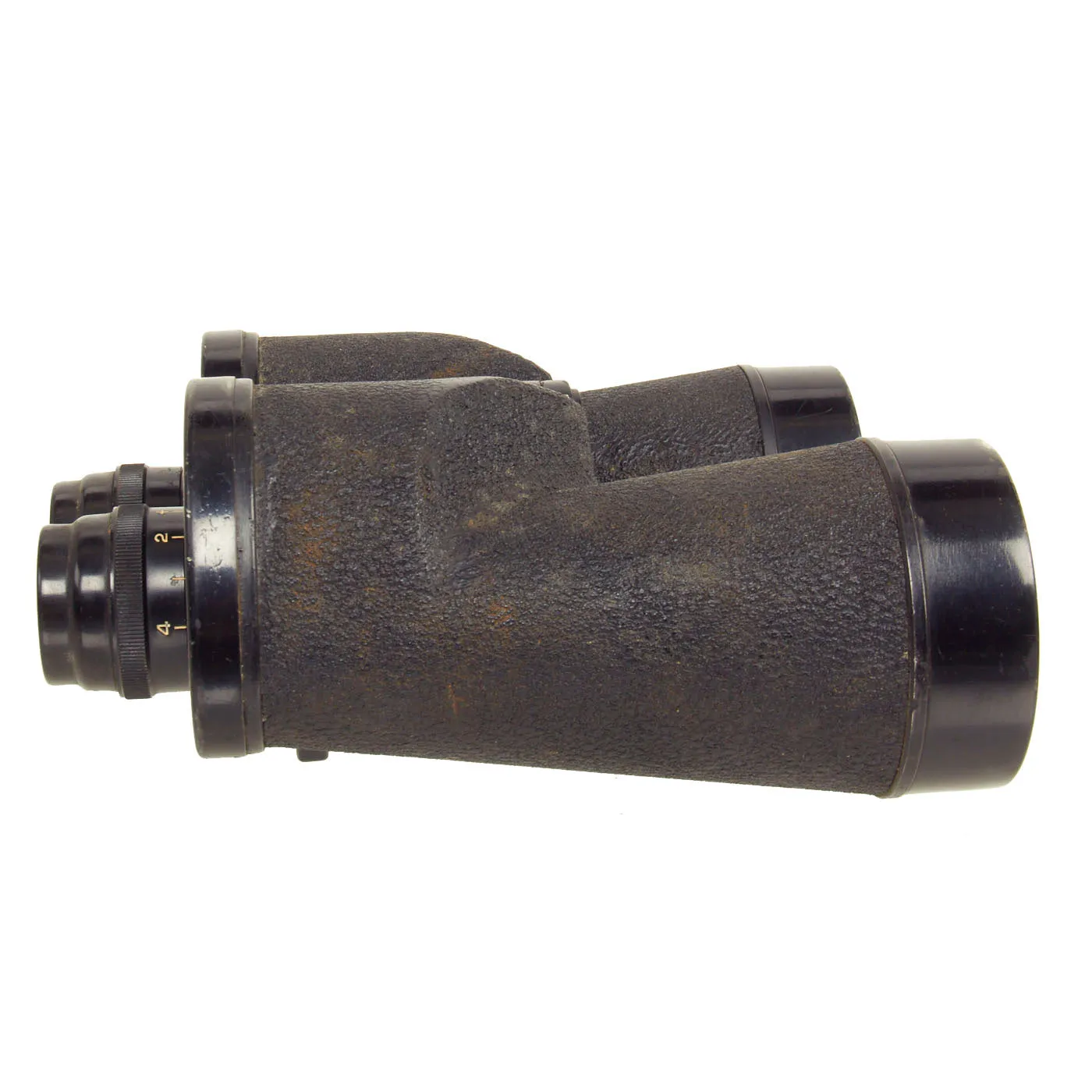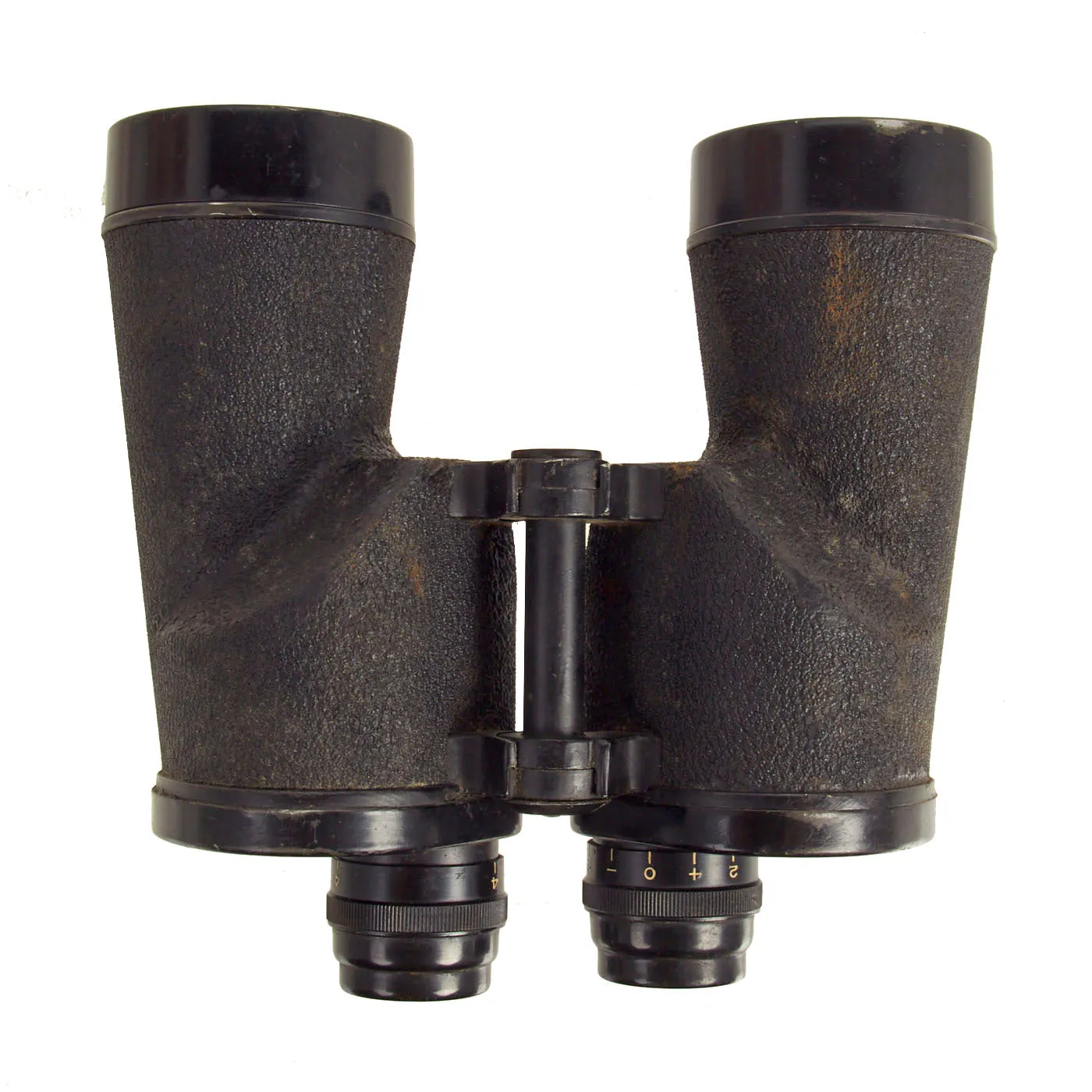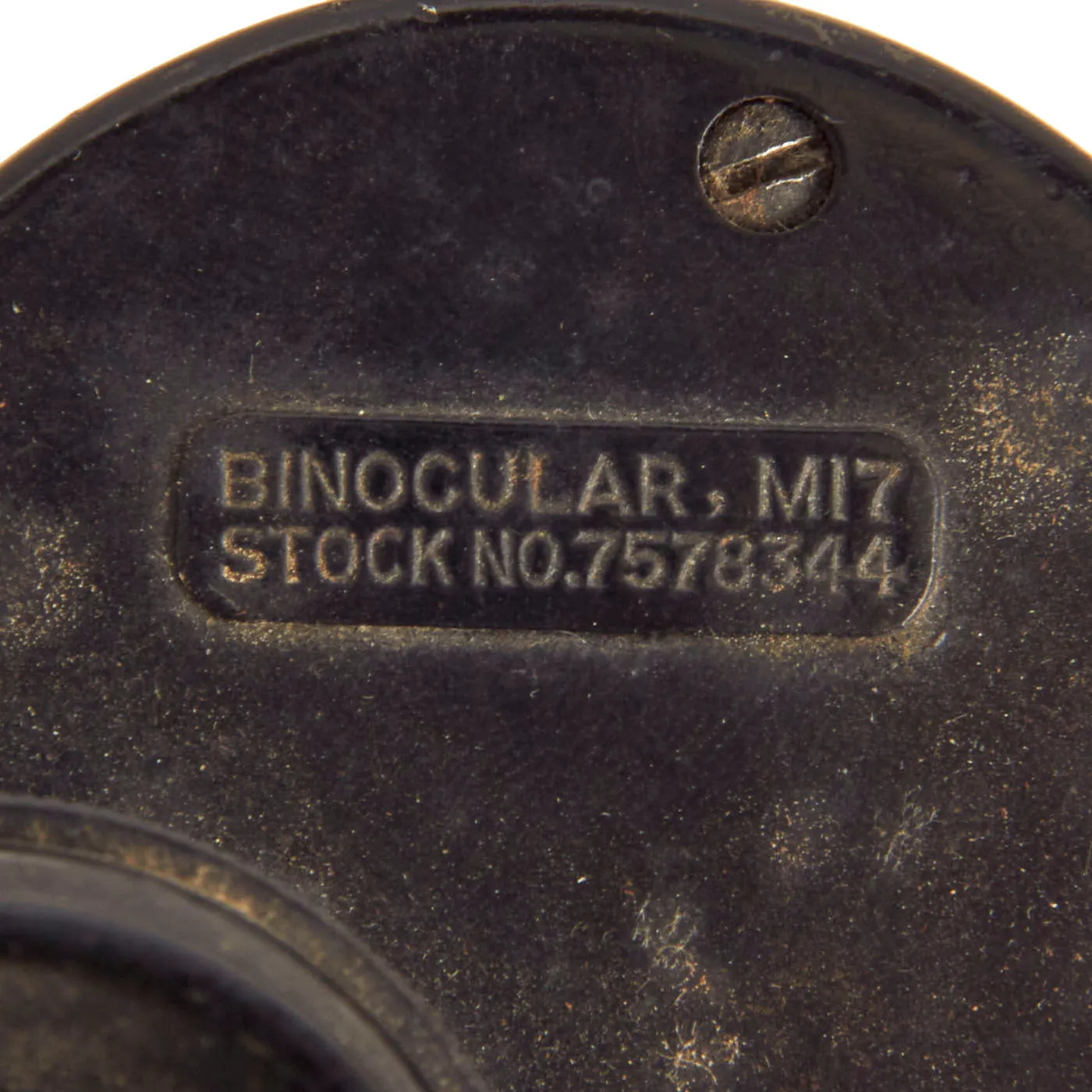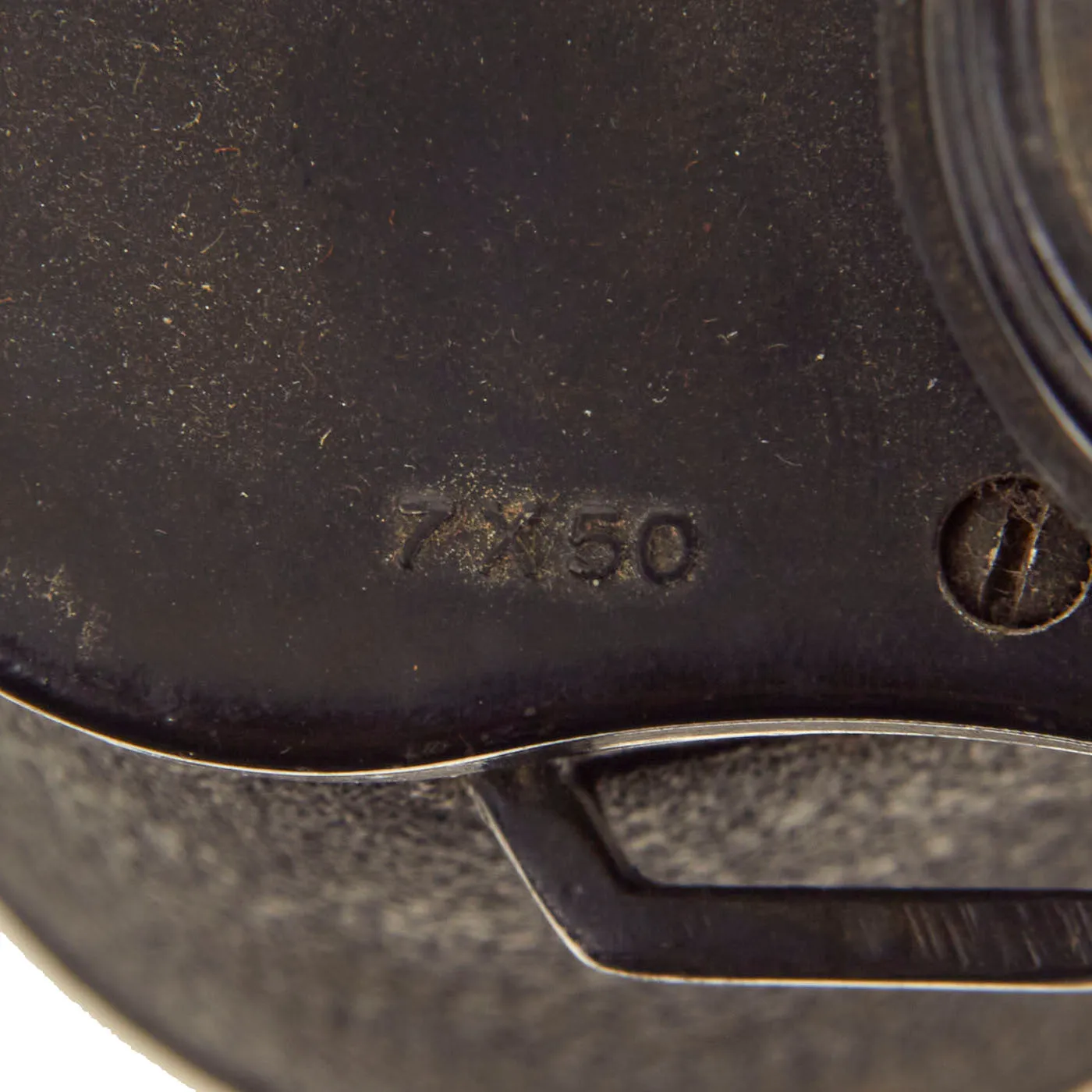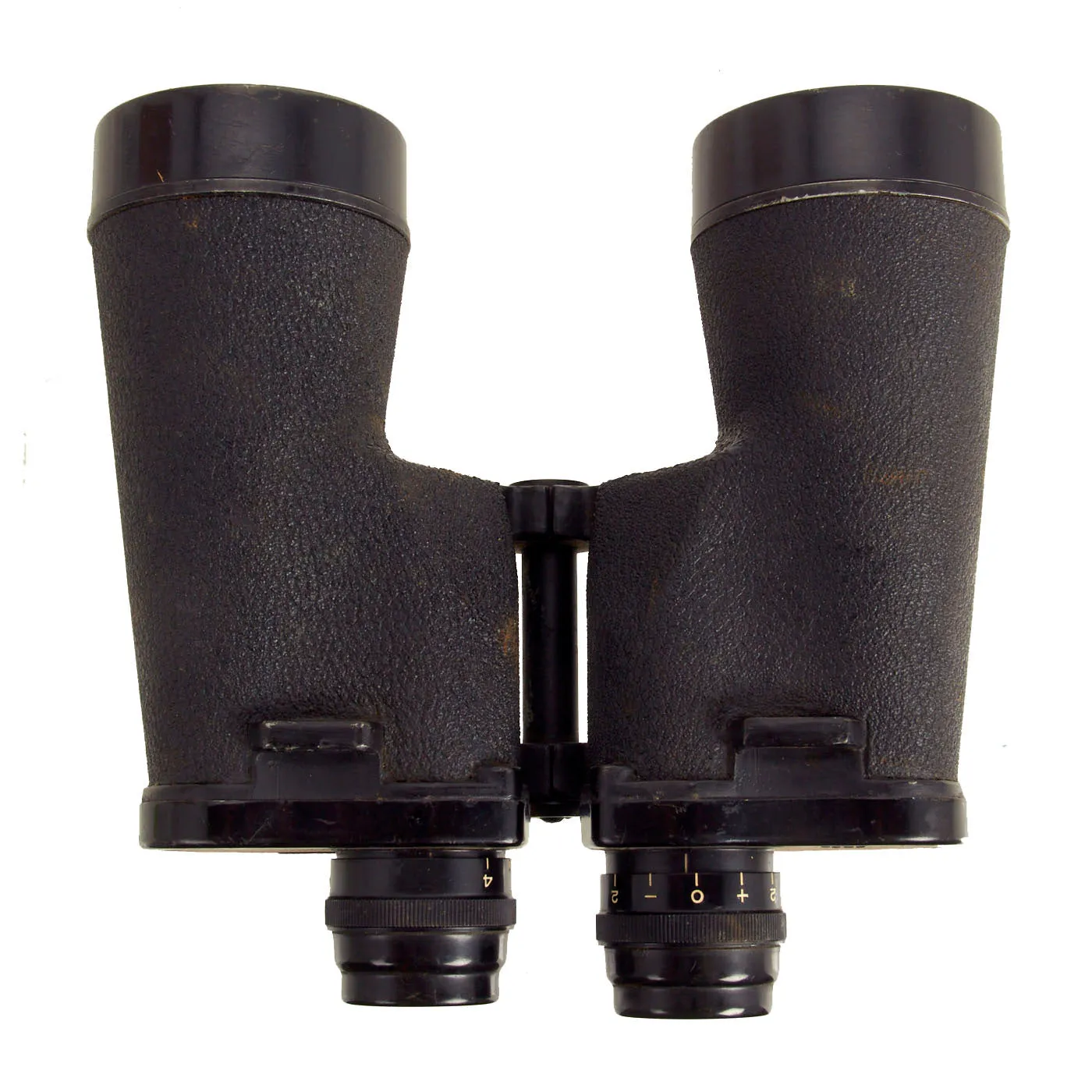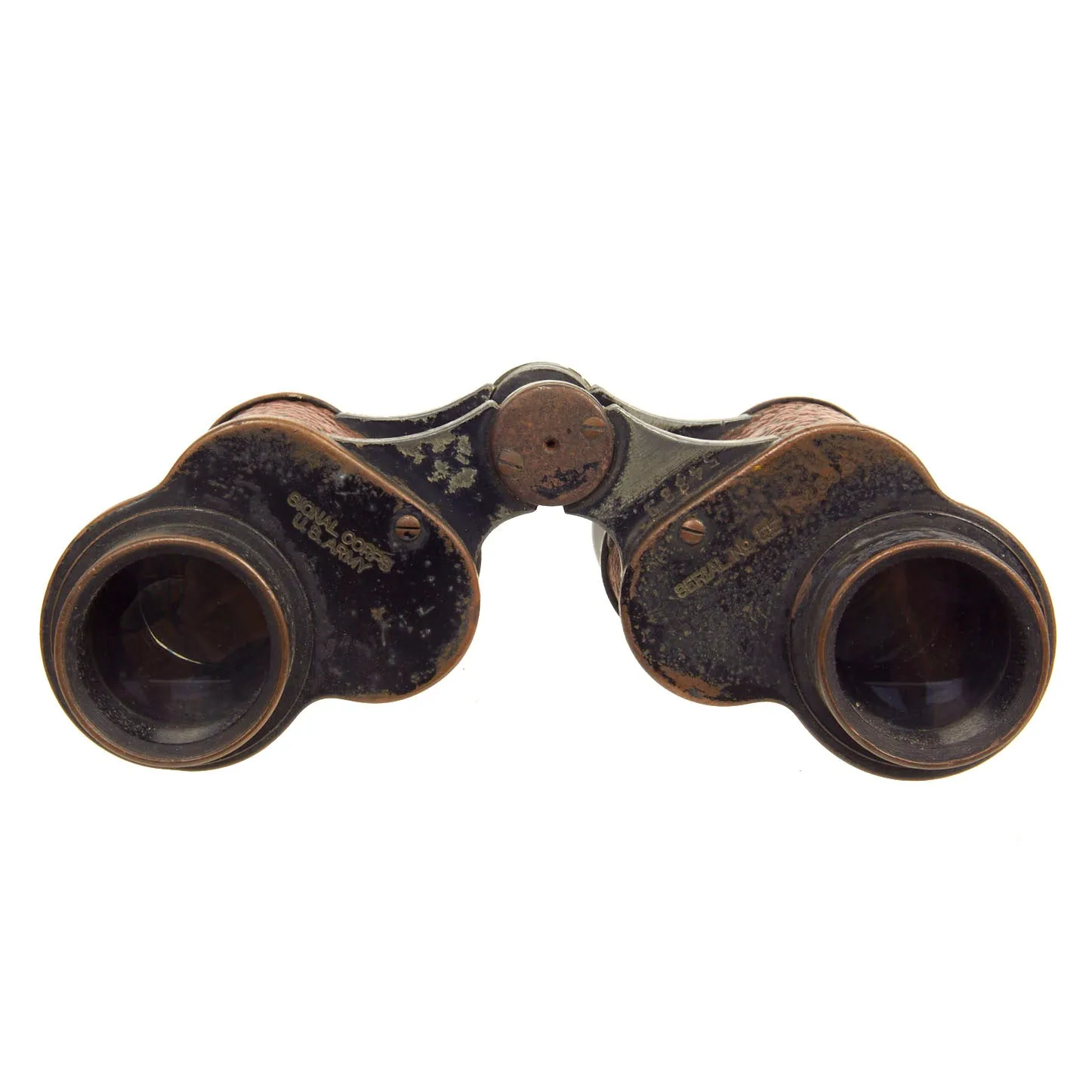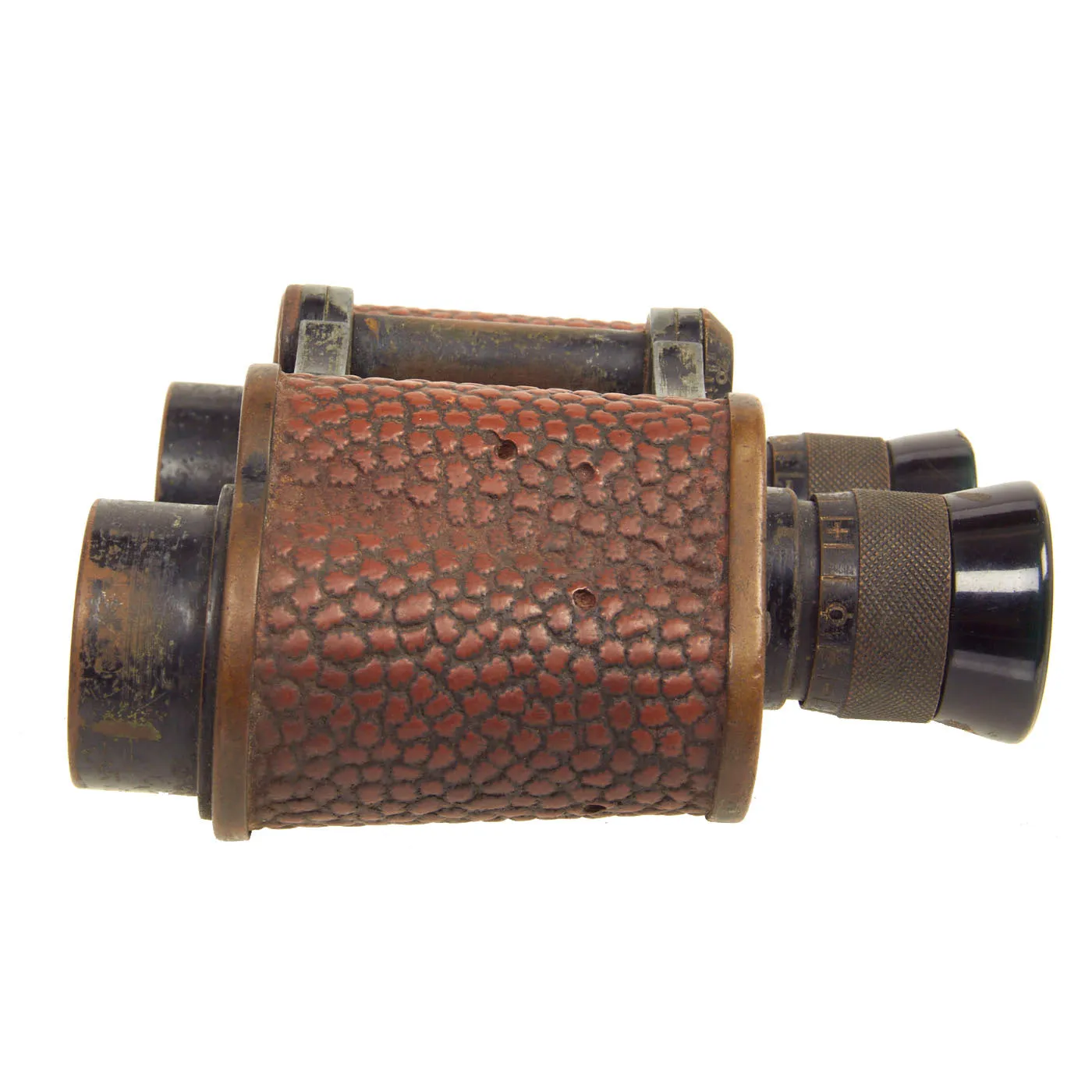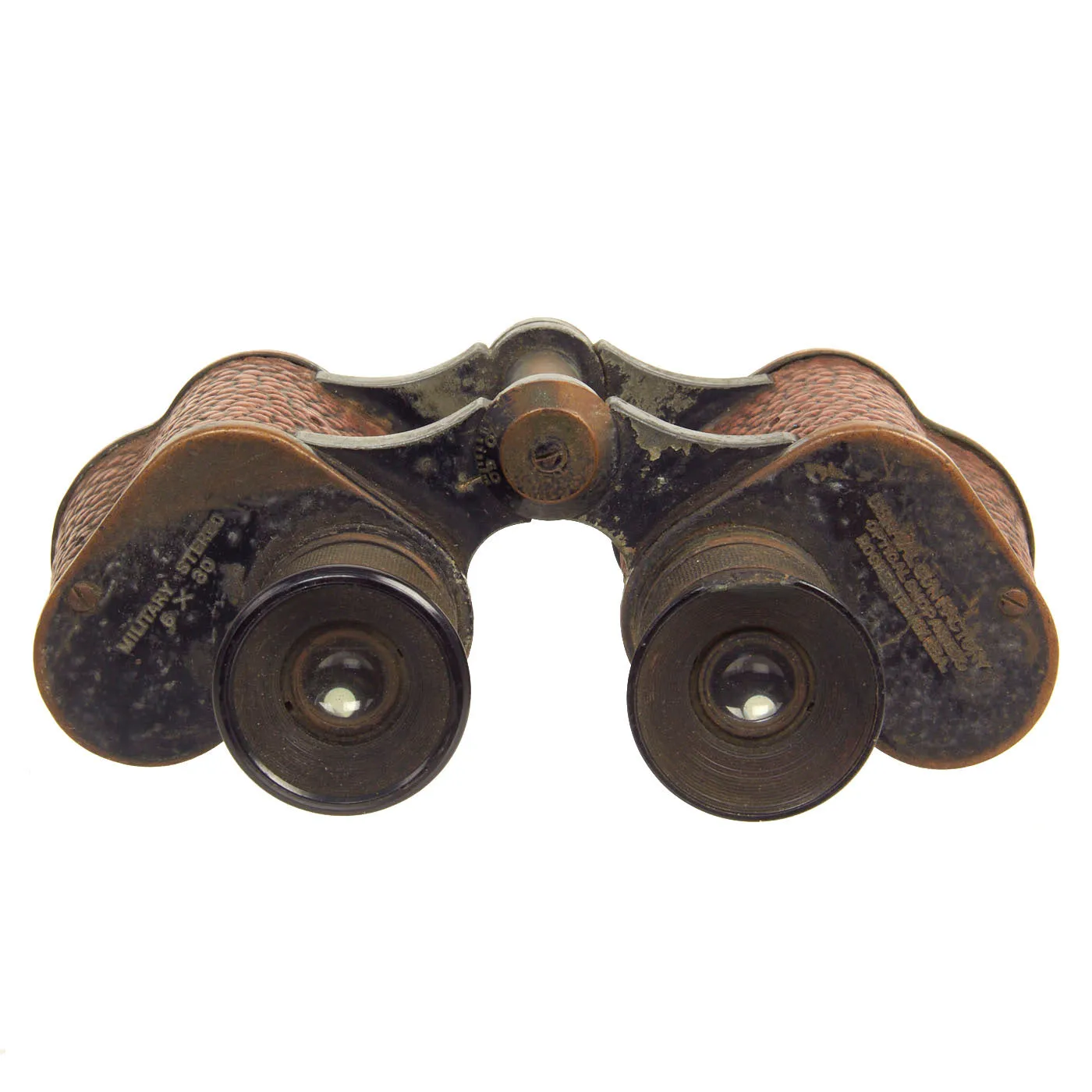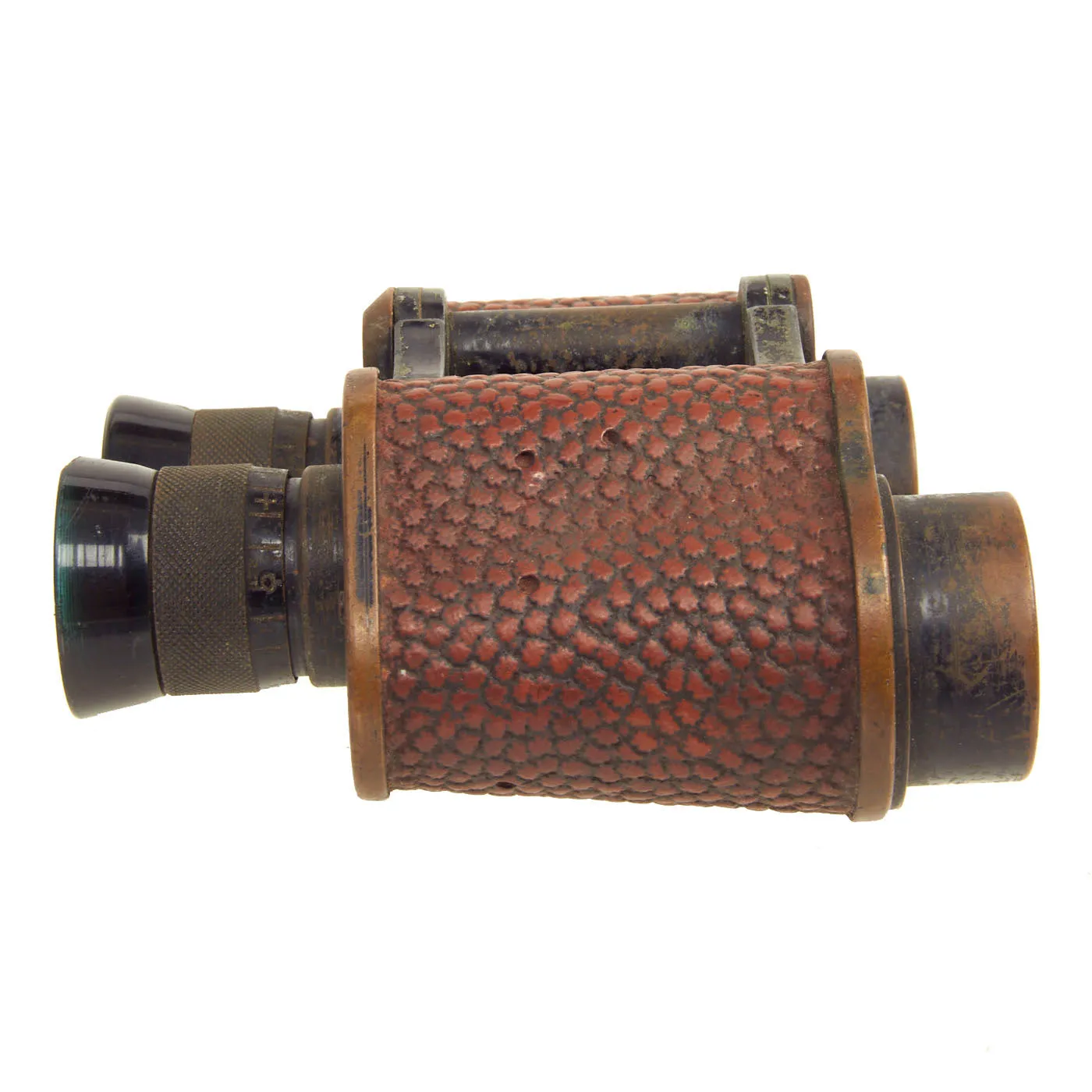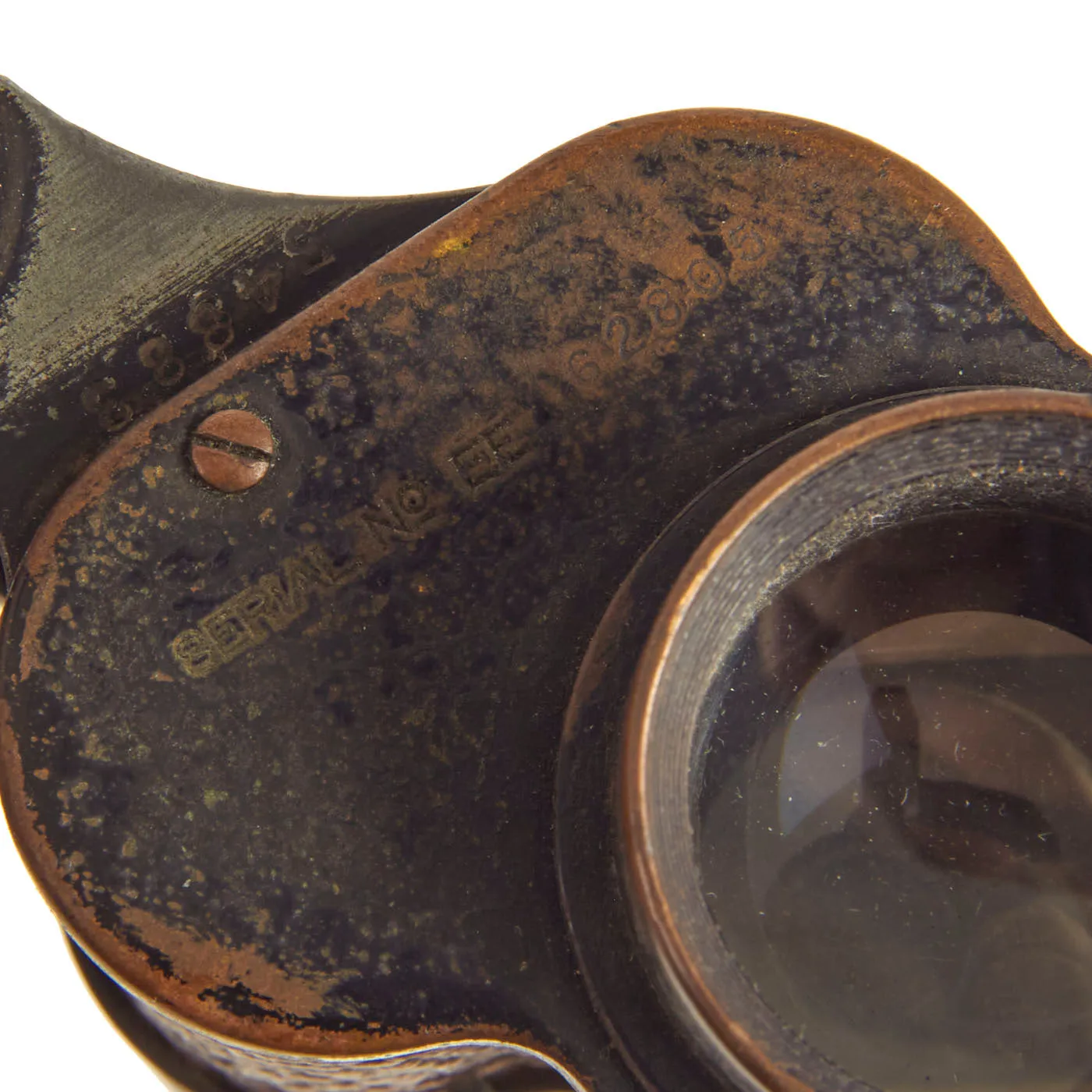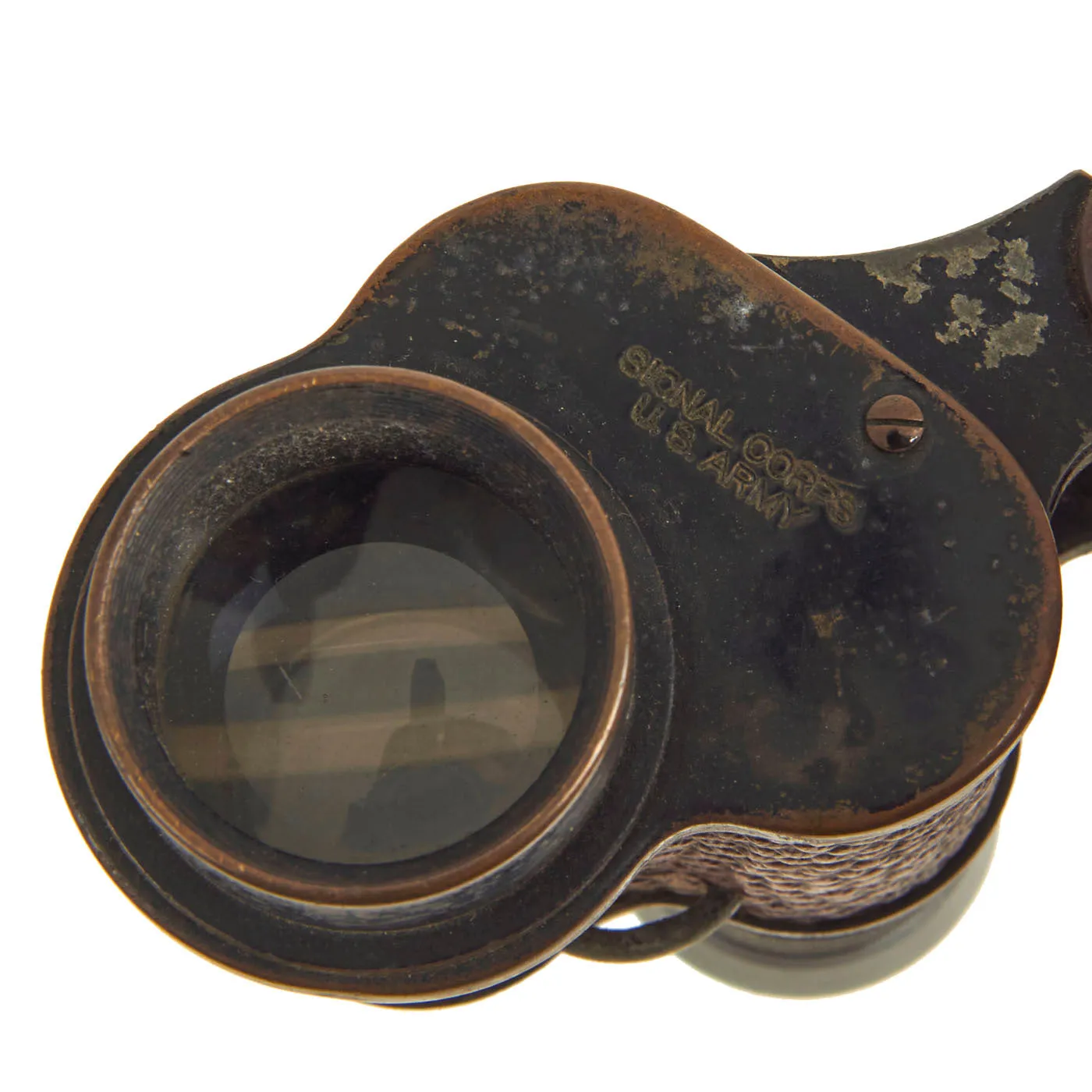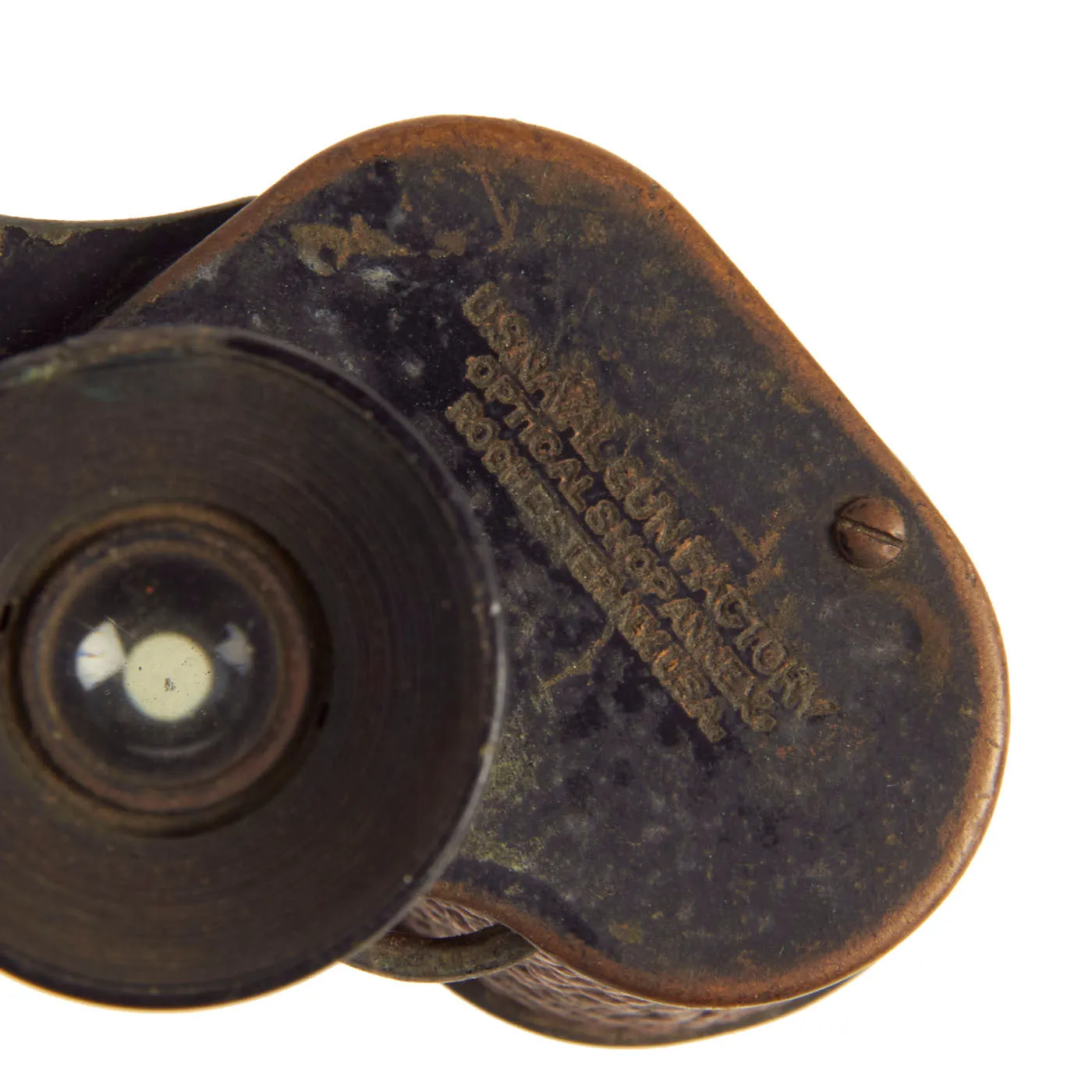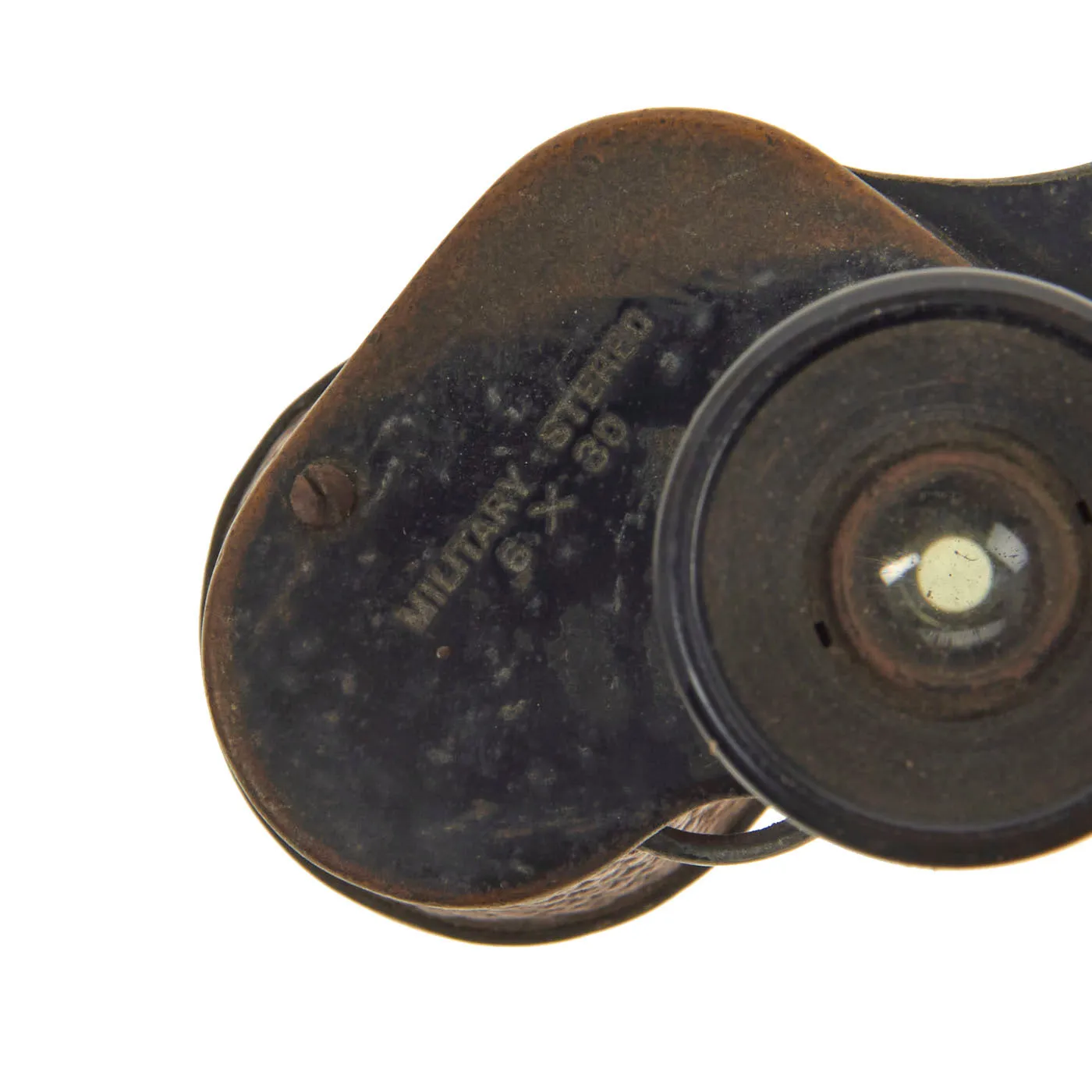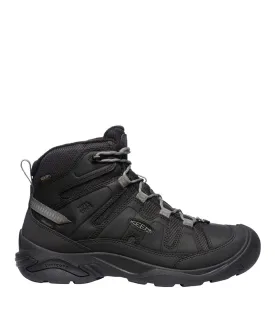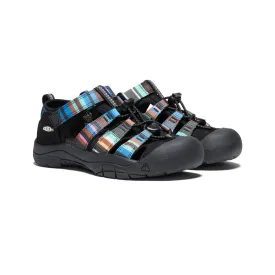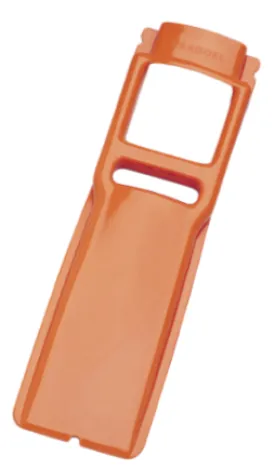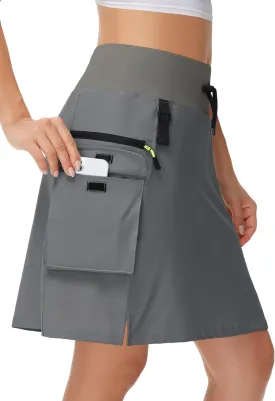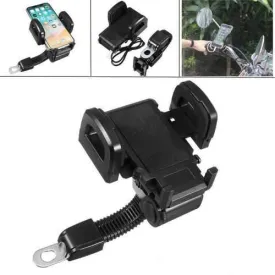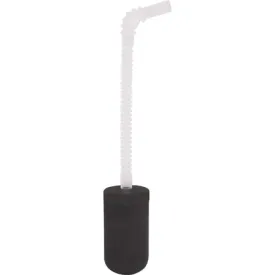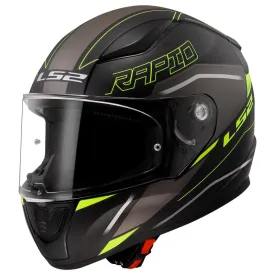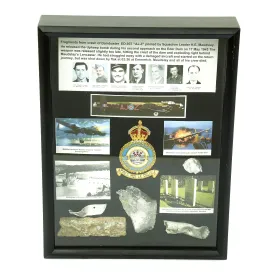Original Items: Only One Lot of 2 Available. Binoculars have a long history of military use. Galilean designs were widely used up to the end of the 19th century when they gave way to Porro prism types. Binoculars constructed for general military use tend to be more rugged than their civilian counterparts. They generally avoid fragile center focus arrangements in favor of independent focus, which also makes for easier, more effective weatherproofing. Prism sets in military binoculars may have redundant aluminized coatings on their prism sets to guarantee they don't lose their reflective qualities if they get wet.
One variant form was called "trench binoculars", a combination of binoculars and periscope, often used for artillery spotting purposes. It projected only a few inches above the parapet, thus keeping the viewer's head safely in the trench.
Military binoculars can and were also used as measuring and aiming devices, and can feature filters and (illuminated) reticles.
Military binoculars of the Cold War era were sometimes fitted with passive sensors that detected active IR emissions, while modern ones usually are fitted with filters blocking laser beams used as weapons. Further, binoculars designed for military usage may include a stadiametric reticle in one eyepiece in order to facilitate range estimation. Modern binoculars designed for military usage can also feature laser rangefinders, compasses, and data exchange interfaces to send measurements to other peripheral devices.
Very large binocular naval rangefinders (up to 15 meters separation of the two objective lenses, weight 10 tons, for ranging World War II naval gun targets 25 km away) have been used, although late-20th century technology made this application mostly redundant.
The Binoculars In This Grouping:
- M17, 7x50 Observation Binoculars: This is a slightly used pair of US Army Mark 17 observation binoculars, dating from around 1944-45. The Mark 17 was essentially a Mark 15 with the addition of the Mark 17 artillery adjustment reticle in the left eyepiece. There were 53,412 of them built by Westinghouse during the war using Bausch and Lomb or Optical Research Company glass elements. The stock number for this model, located on the right end cap, is 7578344. This M17's coated optics place it in a time frame in both production and in development of binoculars and optics in general. The Army was looking for a means to allow their binoculars and telescopes to work earlier in the morning and further into twilight than the enemy's. They discovered that a coating of magnesium fluoride film applied under heat and vacuum allowed more light to pass and thus achieved their goals. By 1944 most American binoculars were made with coated optics. In the 1970s, the Mark 17 binocular was superseded by the Mark 19, which was developed in an attempt to create a pair of M17s with reduced size, weight, and maintenance requirements as well as increase resistance to moisture. Using modular construction and glued prisms, they were able to reduce the M17's weight by one-half.
- WWI 6x30 Binoculars: This is a very nice original pair of U.S. WWI binoculars. Binoculars, known as field glasses, were a very important piece of equipment for U.S. soldiers. They needed it for observations by land or even balloons. Binoculars were in short supply, so many soldiers brought their own personal binoculars to the battlefield. Also a lot of the binoculars from WWI were special donations from civilians received by Army and Navy donation campaigns.
The first set of binoculars is made by the U.S. Maritime Gun Factory Optical Shop Annex. It's in a very good condition, with fairly clean glasses and can still be used today! The binoculars are made for the Signal Corps, which is why they have orange lenses inside. The orange lenses were used for nighttime operations. The operator could choose between the ‘normal’ glasses or the orange glasses.
The United States proclaimed war on the German Empire on 6 April 1917. Crown Optical was among various contracted organizations that were encountering hardships in satisfying the expanding needs of the U.S. Government. So in 1917 Crown Optical was nationalized, the U.S. Government appointed the office to the U.S. Naval force who set up the U.S. Maritime Gun Factory Optical Shop Annex (NGF Annex) in the offices of the previous Crown Optical. Assembly of optics continued and expanded so that by late 1917 the processing plant was providing agencies of the U.S. Naval force, the U.S. Armed forces, and others as well.
After the takeover of the office by the U.S. Naval force markings that fused a Navy Anchor logo, which is visible at the binocular. The labeling of binoculars will bear the U.S. Navy shop origin information in block letters, as bellow:
U.S.NAVAL GUN FACTORY
OPTICAL SHOP ANNEX
ROCHESTER,N.Y. U.S.A.
Both pairs are in lovely serviceable condition and can still be used and focused properly. Comes ready to display!




